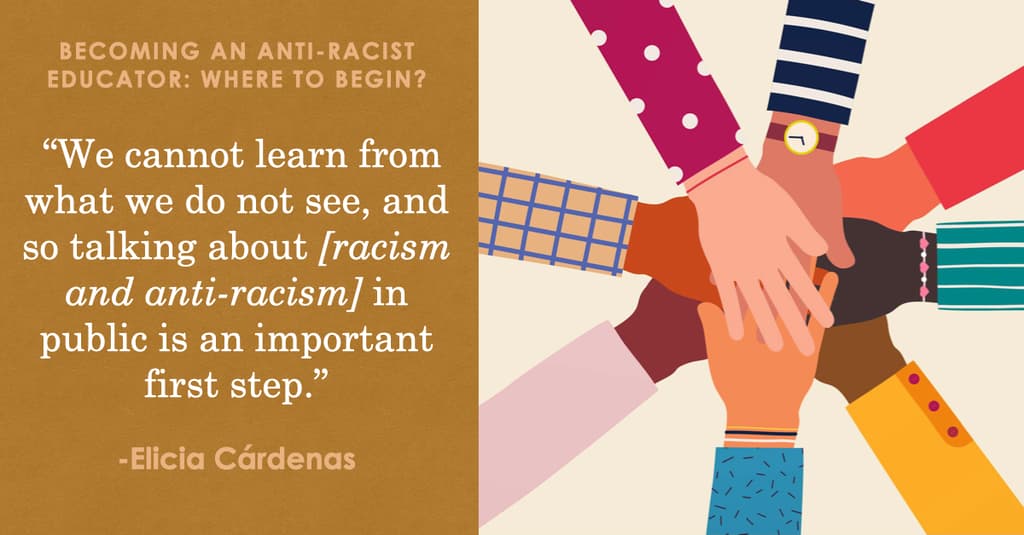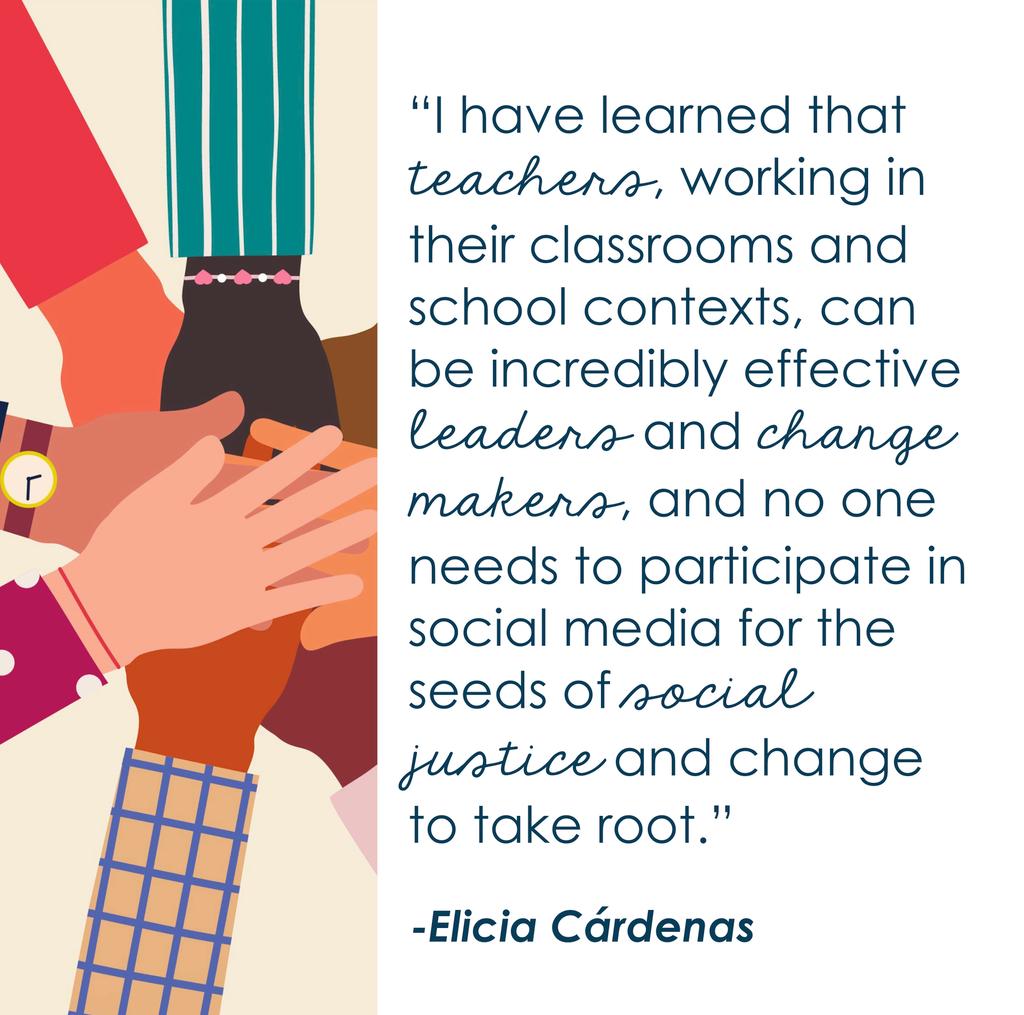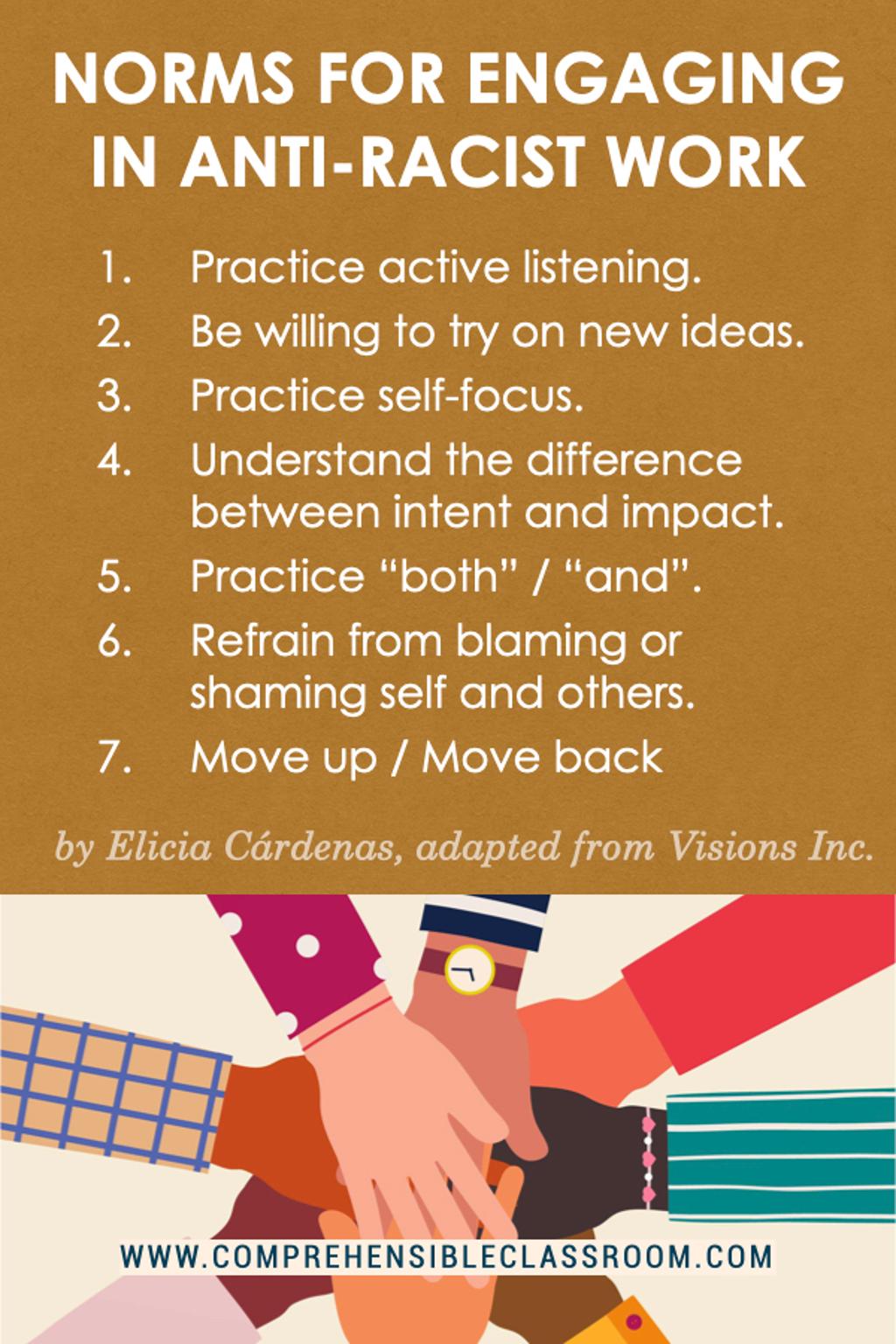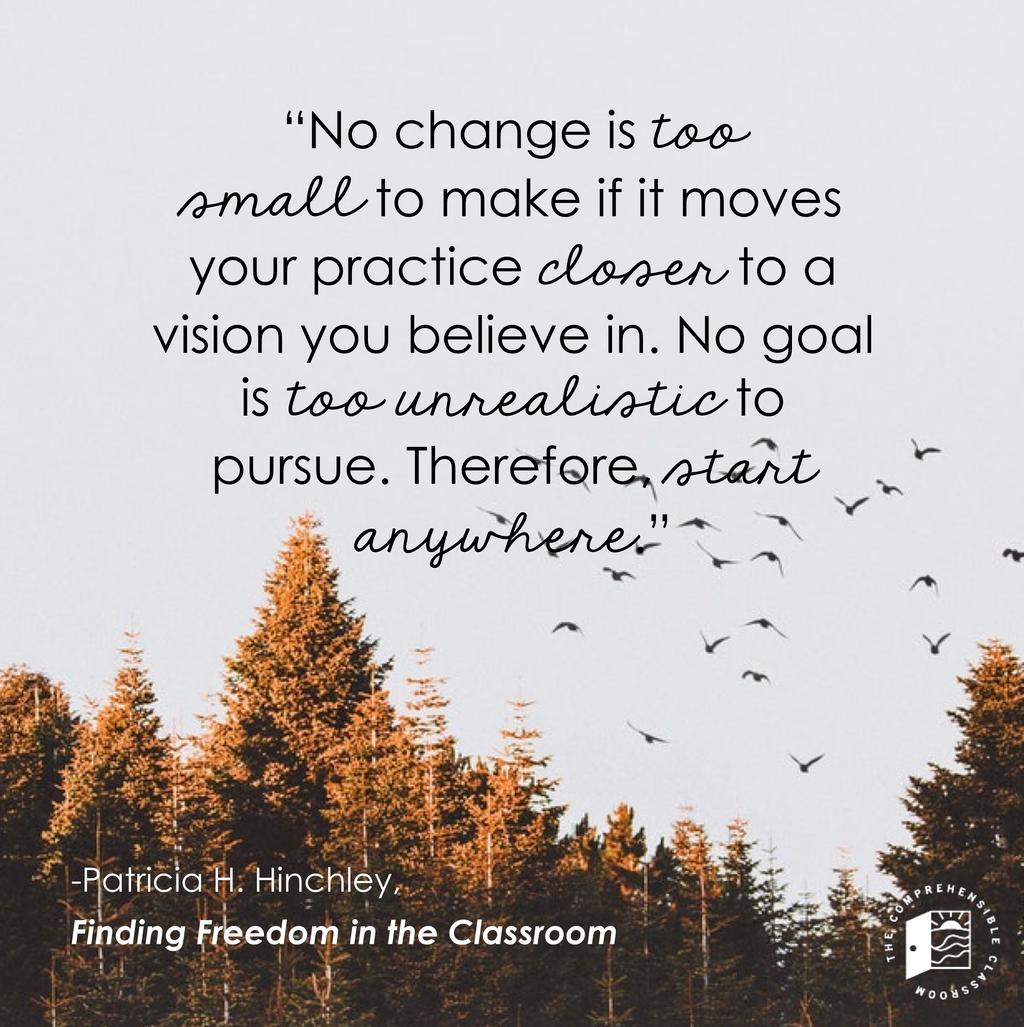This is a guest post authored by Elicia Cárdenas, Director of Training for The Comprehensible Classroom.
In response to the many atrocities that our nation has witnessed at the expense of Black people–and other people–, more and more discussions are happening online and in-person about racism and anti-racism. It is wonderful to see educators coming to consciousness about these atrocities and the systems that perpetuate them, and to see these discussions happening. I am often reminded that the state that I live in, Utah, was forcibly taken away from the people that the state is named after, and I am grateful when I attend an event that acknowledges the people whose land has been stolen. We cannot learn from what we do not see, and so talking about these things in public is an important first step.

Talking about racism is important
I have watched a lot of conversations about this work start to happen. Some of these conversations are happening privately, with departments, friends, Professional Learning Communities, and of course, on social media. My brand new colleagues at the Comprehensible Classroom have been engaging in these conversations too, and in response, many people have written to express a variety of positive emotions and also a variety of hard emotions: confusion about why an organization focused on Comprehension-based teaching is talking about anti-racist work, guilt for not engaging in or even being aware of this kind of work before now, and anger at feeling helpless.
I welcome you all, because talking about this stuff is better than not talking about it. I also want to welcome those who are engaging in these conversations as observers. I know from personal experience that working for a more equitable world can be challenging and even traumatic. I have learned that teachers, working in their classrooms and school contexts, can be incredibly effective leaders and change makers, and no one needs to participate in social media for the seeds of social justice and change to take root.

More than anything, teachers have been writing to ask: “Where do I begin?”. In this post, I am going to share some of my own learning and thinking, as a Person Of Color (POC) and as someone for whom anti-racism and inclusivity have been my north star for as long as I have been an educator. My goal is to build bridges and provide you with direction as you embark on this hard, messy, and important journey.
Anti-racism work is messy work
More than anything, this work-this journey-is MESSY! Talking about racism requires talking about systemic oppression, unconscious biases, and our own identities–and that is hard. And awkward. And often painful. And teaching is already hard!
On social media, I see a lot of (virtual) screaming and shaming of people who are just entering into this mindset and/or trying to figure out where they fit in and how to approach it; I am sorry if you are one of those people who is being shamed or attacked. I am holding you in my thoughts. Remember, this is messy and incredibly personal.
If you are a person who is so angry and you want to DO something and you want to do it NOW and perhaps are doing some of that screaming, I hear you. I acknowledge that silence has been deadly. This is messy, and it takes a lot of practice to do it without causing more harm. And I am glad you are all on this journey.
We are all products of who we are and all we can do is try to be better. We can only start from where we are, and we have some work to do. This work is for all of us, and it is most fruitful when we begin by looking at ourselves.
Anti-racism work is for all educators
As educators, we are responsible for educating all our students. If some students are being dehumanized at any level, I believe we have a responsibility to change that.
Have you ever heard of the term spirit murdering? Spirit murdering is a harsh term, a painful term, an ugly term–but what it describes is worse. Legal scholar Patricia Williams describes spirit murdering in this quote:
"The personal, psychological, and spiritual injuries to people of color through fixed, yet fluid and moldable, structures of racism, privilege and power; spirit-murdering denies inclusion, protection, safety, nurturance, and acceptance–all things a person needs to be human and to be educated."
Patricia Williams
Let me be clear: systemic racism dehumanizes people. Systems of racism, privilege, and power take away the ability of some of our students to be human and to be educated. Even if we think we don't have any of “those kids” that are oppressed by these systems (Black kids, Poor kids, Kids of Color, Immigrant kids, or any Kids that are members of an oppressed group), we probably do. Beyond that, we likely have educators that we work with who are members of those communities too who have been affected by the same system of oppression that we live in. And even if we really don’t have those folks in our community, don’t we have a responsibility to make the world a better place? Isn’t that what teaching is about? Educating children so that they become contributing members of society? Don’t we want them to contribute to the good?
I have been working in a school that holds its values close; all our work is grounded in these values. One value, that of Tikkun Olam (“Repairing the World”), is a driving force. I recognize that the world is not a safe and equitable place, and I want to be part of making it a better, safer, more equitable world.
(To begin learning about systemic racism, please see the list of useful resources below).
How to begin learning about equity
Luckily, there are so many resources for how to build more equity and how to work for a more just world. It’s ok to start from where you are at, and it’s also ok to read, learn, listen, and reflect–because the work starts with you and who you are.
Every single anti-bias, anti-racist training that I have attended or led tends to start in the same place: with agreements about what our behavior will be (the Norms of the training) and with a self-examination of our personal identity and culture.
Norms for engaging in anti-racist work
I offer you some norms when starting on this journey, and I would like to invite everyone to keep these close when doing this work, in person and on social media. These norms are adapted the seven agreements shared in "Guidelines for Productive Work Sessions" by Visions Inc.

- Practice Active Listening: Be willing to be surprised and learn something new. In this case, silence is not complicity. Listening actively can be a way to learn.
- Try It On: Be willing to “try on” new ideas or ways of doing things that might not be familiar or what you prefer.
- Practice Self-Focus: Attend to and speak about your own experiences and responses. Do not speak for a whole group or express assumptions about the experience of others.
- Understand the Difference Between Intent and Impact: Try to understand and acknowledge impact. Denying the impact of something said by focusing on intent is often more destructive than the initial interaction.
- Practice “Both / And”: When speaking (or writing), substitute “and” for “but”. This practice acknowledges and honors multiple realities.
- Refrain from Blaming or Shaming Self and Others: we are all on this journey.
- Move Up / Move Back: If you tend to use your voice often, consider “moving back” and vice versa.
Anti-racist work begins with self-examination
The other starting place that I invite you to explore is your own identity. Who are you? What is your culture? Many people, especially those who grow up with a White lens, they don’t really think about their own culture, at least until they come up against the culture of someone else who they think is like them. In my family, it started with “how do you say thank you for gifts?” Because the way my family believes is “right” is pretty different from that of my husband’s family, and hurt feelings happened all around. Now extrapolate that to grieving, celebrations, and what you think is normal for breakfast. We all have culture. As world language teachers, we are very used to looking at and finding joy in other cultures; we are multilingual and are often experienced at living in another culture. Friends, this is an asset! We already have a sense that the way we think things are and should be done is not the same the world over! This is a great mindset to start with!
In a recent interview with National Public Radio, Robin DiAngelo, the White author of White Fragility, asked readers to reflect on their own experiences, and I would like to offer you a concrete way to begin that reflection. In an oft-cited article by Peggy McIntosh called White Privilege: Unpacking the Invisible Knapsack, the author talks about all the experiences she gets to have as a White woman that are not universal. From being able to find band-aids and crayons in her approximate skin color to being able to protect her children most of the time from people who don’t like them, Ms. McIntosh crafts a powerful list of her own privileges. If you haven’t read it–I mean really read it and reflected on it–I highly recommend that you do so. It is a place to start.
Resources to begin learning about race and racism
I have been doing this kind of work for a long time, and what follows are my recommendations of resources that I think can specifically support teachers in anti-racist work. In addition, look for more posts from me in the coming months about assessment and grading practices that support equity in the classroom, and why these practices are so important.
Please note: This list is not exhaustive; it isn’t even a very long list. These are just the resources that I use and reflect on. Please accept my apologies if you have a resource that you particularly love that is not on this list, and please do add it in the comments!
Courses
I recommend the Teaching with with a culturally responsive lens course from Elevate Education Consulting (and anything from Elevate!) because I have learned a great deal from these incredible educators, and because they approach all of their training with a Comprehension-based framework for language education. Rachelle and Anna also did a workshop earlier this spring that is a mini-version of their culturally responsive CI training if you want something less time intensive than a full class.
I have found Edx, specifically courses from MITx Teaching labs, to be a good source of free, quality coursework that helps frame equity and learning issues in a practical way. At the moment, I am finishing up a class called Becoming a More Equitable Educator. It might be one of, if not the absolute, best teaching resources of this topic, framed with action and practice for teachers. I find it to be very accessible and truly groundbreaking. Fortunately, the creators have made all the coursework available for anyone. If you have time but no money, this is my number one recommendation.
Teaching Tolerance
Teaching Tolerance is probably my #1 access point for professional development around these topics that I can access on my own; they do periodic webinars (some on-demand) and have TONS of free resources. They are also a great resource for teaching materials that include positive representation of all people. Plus, their magazine is priceless.
Conferences
The People of Color Conference and the White Privilege Conference are also significant opportunities for professional development. They are a big investment, but worth every penny.
Books
In terms of books, I do think White Fragility, by Robin DiAngelo, is a good starting point, but not the only one.
Grading for equity, by Joe Feldmen is a really good look at systemic racism in schools and provides a map for teacher actions that can combat it, through the lens of our everyday grading practice. That might not be for everyone, but I love it so much I can’t read it without having to sit down and write a response to each page! Stay tuned for an exploration of this topic as it relates to the day-to-day life of a comprehension based teacher. Please note: both these books were written by white authors.
 These books were recommended by John H. Bracey, a prominent scholar of Afro-American history, to his son @magisterbracey.
These books were recommended by John H. Bracey, a prominent scholar of Afro-American history, to his son @magisterbracey.
Resources by Black authors
If you prefer to focus on learning from Black voices, I recommend the following (and there are SO many, this is just a tiny starting point):
- Why are all the black kids sitting together in the Cafeteria?, by Beverly Tatum
- How to be an Anti-Racist, by Ibrahim X. Kendi
- For white folks that teach in the hood and the rest of y’all too, by Christopher Emdin
- Other People’s Children; Cultural Conflict in the Classroom, by Lisa Delpit
- The Skin that We Speak, edited by Lisa Delpit
- What anti-racist teachers do differently, by Pirette McKamey
District and school-based resources
Finally, most schools and districts do have initiatives and groups that are equity focused (often referred to as Diversity groups, Diversity and Inclusion, etc.), and I always suggest that folks get in touch with their local group if possible. Usually, someone at the district level will be able to point to a group or resources. Sometimes, that is a really good starting point because the resources and educational opportunities are community specific, and can be an easy entry point.
If you do know folks who have been doing this work on these committees and boards, would you do me a favor? Take a moment and thank them. It tends to be thankless, sometimes traumatic work, and these educators deserve recognition.
The most important thing is to start
I would like to leave you with a quote from “Finding Freedom in the Classroom: A Practical Introduction to Critical Theory” by Patricia H. Hinchley, a tome of a book but one that laid the groundwork for my own journey as a change maker and anti-racist educator. “No change is too small to make if it moves your practice closer to a vision you believe in. No goal is too unrealistic to pursue. Therefore, start anywhere.”

Let's get started!
About the author:
Hi! I am Elicia. My pronouns are she/her/hers and I identify as a Latina. I also acknowledge that I am White passing, which means that I have many privileges based on the color of my skin. I have been teaching middle school Spanish with a comprehension based focus for the last six years, along with serving on our school’s Diversity, Equity, and Inclusion committee for the same six years. As I have grown as a comprehension based teacher and as an anti-racist educator, I have continued to focus on being more equitable, more race and bias aware, and more context centered .

Learn more about Elicia on her blog.




